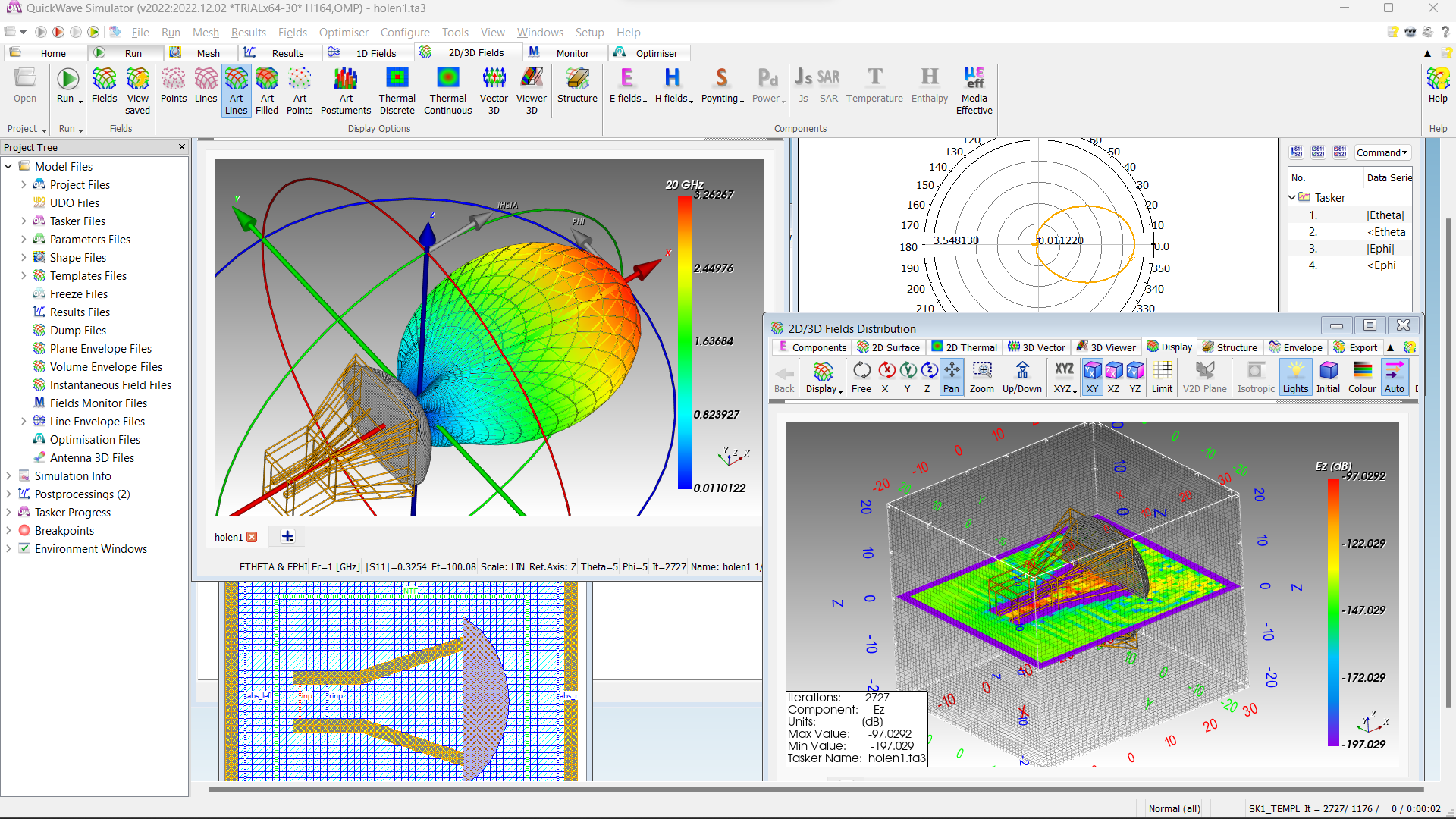QuickWave 2022
Software for electromagnetic design and simulations based on conformal FDTD method.
Dear QuickWave Users,
QWED has continued efforts on extending availability, speed and functionality of the QuickWave software for electromagnetic design as well as the scope of its applications.
We are pleased to announce that the newest QuickWave 2022 has been released.
QWED has continued efforts on extending functionality of the QuickWave software for electromagnetic design as well as the scope of its applications. With the introduction of QuickWave 2022 we expand the possibilities with fast and easy project design, fast and accurate simulation and more flexible user interface.
The major requirements of microwave engineers during the design are to have a convenient way to import geometrical data from mechanical CAD software, setting a few simulation parameters and obtaining the results in a reliable time. QWED adjust the development of the QuickWave electromagnetic software to fulfil these needs. An improved QW-AddIn for Autodesk® Inventor® Software, very popular and wide-spread mechanical tool, allows defining complete electromagnetic simulation directly in the mechanical data environment.
The speed of simulation is an important issue. Multiprocessor/Multicore and GPU versions of QW-Simulator allow very fast simulations of large real-life problems with very high accuracy of the simulation results.
In QuickWave version 2022 the internal Heat Flow Module is integrated with QW-Simulator GPU and calculations are performed on the GPU card. The implementation of the internal Heat Flow Module takes into account the divided cells (without boundary conditions) and assures faster heat flow simulations.
The antenna radiation pattern can be calculated taking into account far fields only NTF (Near to Far transformation). In many applications however near antenna fields are interesting and NTN (Near to Near) processing can be useful. User can of course create circuit which take near zone into the calculated FDTD area, however such approach can be computational ineffective because of substantially enlarging FDTD computational space and cells number hence computational time would be relatively long.
Using NTN processing user can define set of points cloud which can be arbitrary shaped in arbitrary location in space. In each point EM field will be calculated in chosen set of frequencies. User then gain much more freedom in EM calculations in space and location in contrast to FDM processing. In version of QuickWave 2022, the NTN postprocessing can be applied for 3D models.
We also focused on the comfort using the software introducing a lot of options for user interface adjustments for new Surface 2D and 3D Radiation Pattern displays.
New QW-Modeller for QuickWave allows for parametrisation of the model with user defined variables and Spreadsheet workbench for more complex formulas. The parametrisation also allows for optimisation or grid-search procedures of QW-Optimiser Plus.



